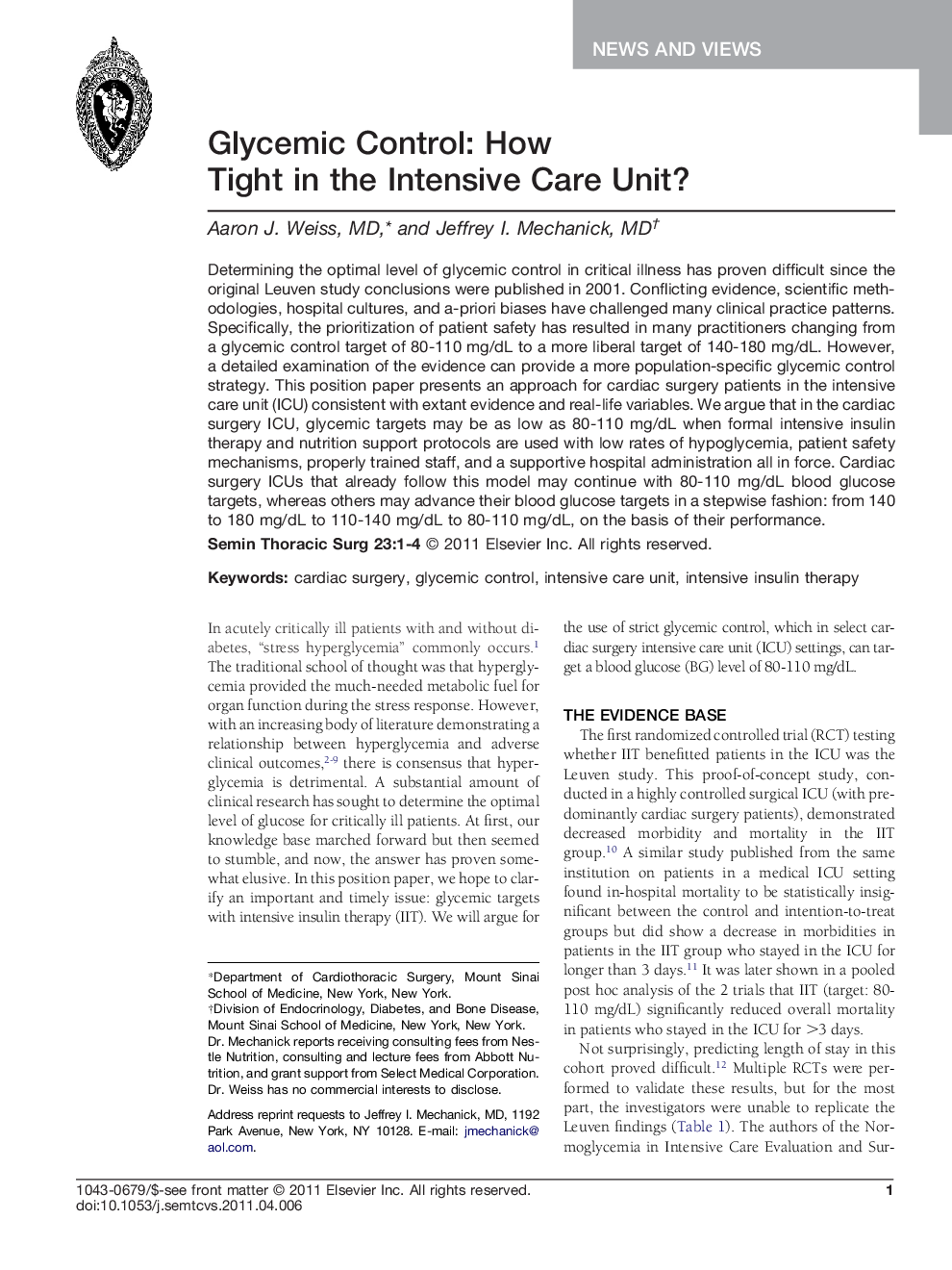| Article ID | Journal | Published Year | Pages | File Type |
|---|---|---|---|---|
| 3025513 | Seminars in Thoracic and Cardiovascular Surgery | 2011 | 4 Pages |
Determining the optimal level of glycemic control in critical illness has proven difficult since the original Leuven study conclusions were published in 2001. Conflicting evidence, scientific methodologies, hospital cultures, and a-priori biases have challenged many clinical practice patterns. Specifically, the prioritization of patient safety has resulted in many practitioners changing from a glycemic control target of 80-110 mg/dL to a more liberal target of 140-180 mg/dL. However, a detailed examination of the evidence can provide a more population-specific glycemic control strategy. This position paper presents an approach for cardiac surgery patients in the intensive care unit (ICU) consistent with extant evidence and real-life variables. We argue that in the cardiac surgery ICU, glycemic targets may be as low as 80-110 mg/dL when formal intensive insulin therapy and nutrition support protocols are used with low rates of hypoglycemia, patient safety mechanisms, properly trained staff, and a supportive hospital administration all in force. Cardiac surgery ICUs that already follow this model may continue with 80-110 mg/dL blood glucose targets, whereas others may advance their blood glucose targets in a stepwise fashion: from 140 to 180 mg/dL to 110-140 mg/dL to 80-110 mg/dL, on the basis of their performance.
